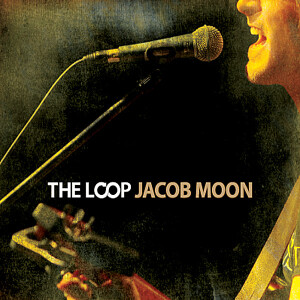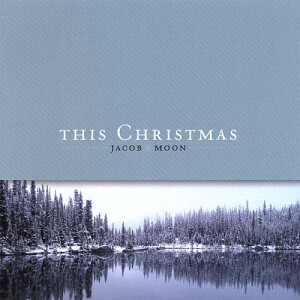 It’s a brave person indeed who releases two CDs at the same time. But these two from Canadian musician Jacob Moon could not be more different. One is a Christmas album, and the other is a record of a typical Moon concert. And both have plenty to offer to anyone interested in creative guitar playing, interesting arrangements and good singing.
It’s a brave person indeed who releases two CDs at the same time. But these two from Canadian musician Jacob Moon could not be more different. One is a Christmas album, and the other is a record of a typical Moon concert. And both have plenty to offer to anyone interested in creative guitar playing, interesting arrangements and good singing.
Who is Jacob Moon? He lives in my home town of Hamilton, Ontario. He lists Paul Simon, the Guess Who, James Taylor and U2 among his influences, so when he kicks off his live album The Loop with “Come Talk To Me” by Peter Gabriel, it’s not too much of a surprise. I’ve seen him live, and he uses a JamMan looper and other gizmos to lay down a rhythm track, some beats, maybe a bass riff, and then he plays over top to create his own band sound. It’s fascinating to watch, and sounds good even without the visuals.
“The Great Beyond” is a contemplative number that looks for answers to the big questions. That’s the direction Moon likes to go. He has a true tenor voice that rises above the rhythmic strumming and electronic sounds. He pulls his audience in with superb use of dynamics and the wow factor. You watch him, and you think, “Wow, he does all that himself.” “Not Gonna Lose” begins with a chord pattern, over which he place a lead, then the vocals start, some guitar punctuations, and that’s the way it goes. It’s all live, all Jacob Moon. Of the 10 songs, six are originals, and the covers are as varied and eclectic as can be.
He calls his music “eclectic folk” and I think that’s about as close to the matter as you can get. Rich acoustic guitar sounds and solo vocals (except for the gospel choir that appears on “Just Like You”) and the loops. The covers? Besides Peter Gabriel, there’s “Hide & Seek” by jazz saxophonist Joshua Redman (that’s a funky treat), more jazz from Kurt Elling’s “Esperanto” and a Rush song. RUSH!?! That was my reaction when he announced that he’d be playing it at the concert, but sure enough, Moon does “Subdivisions” in a brilliant folky style that suits the song perfectly.
 This Christmas is, as you might suspect, a Christmas album. Everyone who records eventually comes ’round to this. But I have to say Moon has made a beautiful disc, with carefully chosen songs, not the standard “Pretty Paper” and “Rudolph the Red Nosed Reindeer.” Nope. For Jacob it’s all about the real meaning of Christmas, the birth of a child in a stall in Bethlehem some 2,000 years ago. This Christmas celebrates this birth, and the child that grew to manhood. The album has a fuller sound, with real drums, strings and backing vocals. There are new arrangments of old familiar carols. You won’t recognize “It Came Upon the Midnight Clear” until the vocals come in. Roy Salmond plays the organ, Pete Daveyduck bass, Mark Inneo drums and harmony vocals are added by Carolyn Arends.
This Christmas is, as you might suspect, a Christmas album. Everyone who records eventually comes ’round to this. But I have to say Moon has made a beautiful disc, with carefully chosen songs, not the standard “Pretty Paper” and “Rudolph the Red Nosed Reindeer.” Nope. For Jacob it’s all about the real meaning of Christmas, the birth of a child in a stall in Bethlehem some 2,000 years ago. This Christmas celebrates this birth, and the child that grew to manhood. The album has a fuller sound, with real drums, strings and backing vocals. There are new arrangments of old familiar carols. You won’t recognize “It Came Upon the Midnight Clear” until the vocals come in. Roy Salmond plays the organ, Pete Daveyduck bass, Mark Inneo drums and harmony vocals are added by Carolyn Arends.
“Once in Royal David’s City” is fingerpicked guitar, taken at a brisk pace. “Rise Up Shepherd and Follow” is a traditional spiritual song that gets a funky, bluesy treatment. “I Saw Three Ships” reminds this listener of Bruce Cockburn. “O Come, O Come Emmanuel” drags all the melody out of the minor key for a mournful beginning and then picks up the tempo with drums and a snapping guitar part. The title track is the one original tune included here, and is the most like material on the live album. Except it’s played with a full band, and even glockenspiel!
One of the season’s most beautiful melodies is given gorgeous treatment on Gustav Holst’s setting of Christina Rossetti’s lyrics, “In the Bleak Midwinter.” Aah! Then there’s “Go Tell it On the Mountain” sort of jazzy, and “You Gotta Get Up” all folky and acoustic to wrap things up. It’s the kind of Christmas album I’m actually going to play again. Pretty, meaningful, and well-played throughout.
Two solid albums by one talented musician.
(signpost, 2007)
